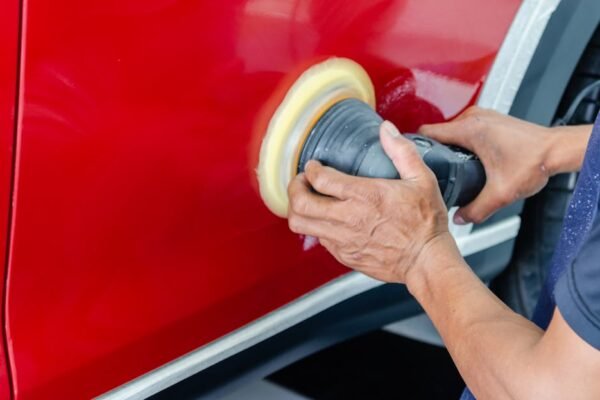The Evolution of Automotive Safety Technology
{“type”:”img1″,”src”:”https://mostmotors.com/wp-content/uploads/2024/03/fileUpload-55.jpg”,”alt”:”automotive technology”}The journey of automotive safety has been a long and arduous one, marked by significant milestones that have dramatically reduced fatalities on the road. From the invention of the seatbelt to the integration of advanced driver-assistance systems (ADAS), the industry's commitment to safety has saved countless lives. This evolution is a testament to the pioneering spirit of automotive industry leaders dedicated to blending technology with safety.
Safety in automobiles has evolved from basic features to sophisticated, interconnected systems that anticipate and react to potential hazards. The progression from mechanical innovations to digital technology marks a pivotal shift in how manufacturers approach vehicle safety.
Industry pioneers have continually pushed the boundaries of what's possible, leveraging cutting-edge technology to develop safety features that make vehicles not only safer but smarter. These include automatic braking systems, lane-keeping assist, and adaptive cruise control.
The integration of these technologies has set new standards in automotive safety, serving as benchmarks for new vehicles entering the market. It's a dynamic field where innovation is constant, driven by the relentless pursuit of zero road fatalities.
Looking ahead, the future of automotive safety lies in the continued blend of artificial intelligence, machine learning, and advanced sensing technology. These elements promise to usher in an era of autonomous vehicles, characterized by unprecedented levels of safety and efficiency.
The Impact of Regulatory Bodies and Safety Ratings
Regulatory bodies play a crucial role in shaping the safety standards of the automotive industry. Through rigorous testing and safety ratings, they influence manufacturers to prioritize safety in design and functionality. The Insurance Institute for Highway Safety (IIHS) and the National Highway Traffic Safety Administration (NHTSA) are notable entities that set safety benchmarks and conduct crash tests to evaluate vehicle safety.
These organizations' ratings have become a crucial factor for consumers when choosing a vehicle. A high safety rating not only signifies a car's ability to protect its occupants but also influences buyer perception and, consequently, manufacturer reputation.
{“type”:”img1″,”src”:”https://mostmotors.com/wp-content/uploads/2024/03/fileUpload-58.jpg”,”alt”:”car safety features”}The interplay between regulation and innovation creates a competitive environment where manufacturers are motivated to exceed minimum safety standards. This dynamic fosters a culture of continuous improvement, driving the development of advanced safety technologies.
The push for higher safety ratings has led to the incorporation of more sophisticated safety systems in vehicles, including blind spot detection, rearview cameras, and emergency brake assist. As these features become standard, the baseline for what constitutes a 'safe' vehicle is elevated, benefiting all road users.
The influence of regulatory bodies extends beyond national borders, with international standards and agreements shaping global automotive safety practices. This global framework ensures that advancements in vehicle safety are not confined to specific regions but benefit a worldwide audience.
Pioneers in Automotive Safety Technology
The advancement of automotive safety technology is closely associated with a few key players in the industry, each of whom has made significant contributions to safety innovation. Volvo, for instance, has a long-standing reputation for safety, having invented the three-point seatbelt and making it freely available to other manufacturers, showcasing a commitment to safety over competition.
Mercedes-Benz is another brand synonymous with safety. Known for their introduction of the crumple zone, Mercedes-Benz has consistently led in incorporating safety features that have now become industry standards, such as anti-lock braking systems (ABS) and electronic stability control (ESC).
Tesla has made waves in the automotive world with its focus on electric vehicles and automated driving technologies. Its Autopilot system and commitment to achieving full self-driving capability illustrate the potential of integrating AI and machine learning into vehicle safety systems, highlighting a forward-looking approach to automotive safety.
These innovators, along with others like Toyota and Ford, have set the pace for safety in the automotive industry. Their relentless pursuit of safer vehicles not only enhances driver and passenger safety but also propels the industry toward a future where road fatalities could become a rarity.
Technological Advances Reshaping Vehicle Safety
The landscape of automotive safety is being transformed by technological advances that enable vehicles to communicate with each other and with infrastructure. Vehicle-to-everything (V2X) communication is a breakthrough technology with the potential to significantly reduce accidents by providing real-time data on traffic conditions, hazards, and vehicle performance.
Autonomous driving technology, still in its developmental stages, represents the pinnacle of vehicle safety. By removing human error from the equation, self-driving cars have the potential to drastically decrease accidents. The integration of sophisticated sensors and AI systems is key to realizing this vision, with prototypes already demonstrating promising results.
Augmented reality (AR) dashboards are another innovative feature enhancing safety. By projecting vital information directly onto the windshield, drivers can maintain focus on the road while still staying informed about navigation, speed, and safety alerts. This technology represents a leap towards more intuitive and safer driving experiences.
Electrification of vehicles not only addresses environmental concerns but also opens new avenues for safety enhancements. Electric vehicles offer a different structural design that can improve crashworthiness, while also bringing about advances in braking systems and vehicle stability controls.
Preparing for a Safer Future on the Roads
The journey toward safer roads is an ongoing process, fueled by innovation and the dedication of industry leaders. As technology continues to evolve, so too will the capabilities of vehicle safety systems, offering the promise of a future with significantly reduced road accidents.
The role of policy-makers and regulatory bodies in supporting and adopting new technologies is crucial in this evolution. By setting safety standards that encourage the adoption of advanced safety features, they can significantly influence the direction and speed of safety innovations.
Consumer education and awareness are equally important. As vehicles become more sophisticated, drivers and passengers must understand how to utilize safety features effectively. Knowledge sharing and training can empower individuals, making them active participants in road safety.
Ultimately, the future of automotive safety is a collective endeavor that requires the collaboration of manufacturers, regulators, technology companies, and consumers. Together, we can drive towards a horizon where the road is a safer place for everyone.





